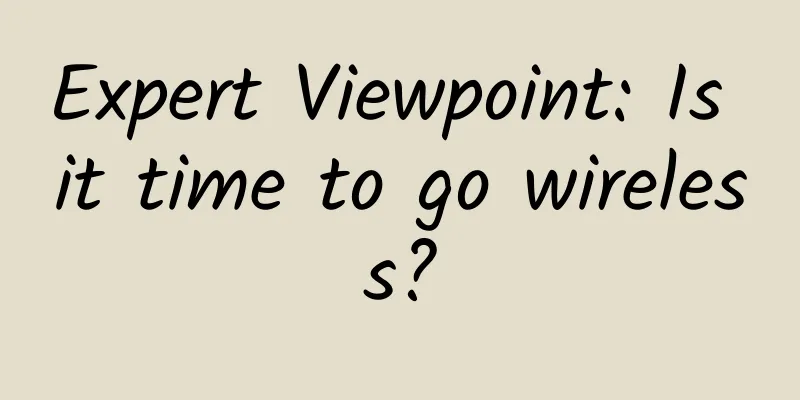Report: Global Satellite IoT Market Users to Reach 26.7 Million in 2028

|
According to a recent research report released by Berg Insight, a professional IoT analysis agency, the global satellite IoT communications market size is growing at a steady rate and is expected to grow to 26.7 million households by 2028. Satellite IoT market is booming, and operators are striving to continue to grow the number of usersThe report reveals that by 2023, the number of global satellite IoT users has exceeded 5.1 million. Looking ahead, this user group will continue to grow at a compound annual growth rate (CAGR) of 39.2%, reaching 26.7 million by 2028. Currently, only about 10% of the world's surface area can obtain ground connection services, which provides huge development space and opportunities for satellite IoT communication technology. Satellite connections can supplement ground cellular and non-cellular networks in remote areas, especially suitable for industries such as agriculture, asset tracking, maritime transport, oil and gas industry exploration, utilities, construction and government. Existing satellite operators and more than 20 emerging companies are actively entering the IoT connection market. Figure 1 Global satellite IoT user growth trend from 2022 to 2028 Berg Insight’s research covers 40 satellite IoT operators and provides an in-depth analysis of the current status and development prospects of this field. “Iridium, Orbcomm, Viasat (Inmarsat) and Globalstar are currently the largest satellite IoT network operators today,” said Johan Fagerberg, principal analyst at Berg Insight, in the report. Iridium achieved a significant 17% increase in its subscriber base in 2023, leading the industry with 1.8 million subscribers. Originally a dedicated satellite operator, ORBCOMM has transformed itself into an end-to-end solutions provider, providing services not only on its own satellite network but also as a distribution partner for ViaSat (Inmarsat) and others. By the end of 2023, ORBCOMM had a total of 715,000 subscribers on its own and ViaSat networks. Globalstar has 480,000 subscribers. Other satellite operators with tens of thousands of subscribers include Australia's Myriota, France's Kineis and the United Arab Emirates' Thuraya. New companies emerge, low-Earth orbit nanosatellites lead the technology trendIn addition to the existing satellite operators, a number of new and notable companies have recently emerged in the market, including Astrocast, AST SpaceMobile, CASC/CASIC, E-Space, Hubble Network, Kepler Communications, Kineis, Ligado Networks, Lynk, Myriota, Omnispace, Skylo, Swarm Technologies (SpaceX), and Totum. Many of these companies are built around the core concept of nanosatellites in low Earth orbit. While some companies rely on proprietary satellite connectivity to support IoT devices, others are beginning to leverage terrestrial wireless IoT connectivity. In the coming years, collaboration between satellite and mobile operators to explore new hybrid satellite-terrestrial connectivity opportunities will become more common. Fagerberg concluded: “Skylo is the most active non-terrestrial network (NTN) provider offering hybrid cellular/satellite services in recent times, with partners including Deutsche Telekom, BICS, emnify, floLIVE, Monogoto, O2 Telefónica, Particle, Soracom, Transatel and 1GLOBAL (Truphone). Other satellite IoT operators working with mobile operators and mobile virtual network operators (MVNOs) include Sateliot, Starlink, OQ Technology, Omnispace, Lynk, Intelsat, ViaSat and AST SpaceMobile.” |
<<: Why does TCP require three handshakes instead of two?
>>: One picture to help you understand: 2024 Volcano Engine Feilian New Product Launch Conference
Recommend
The road is wide and the traffic is fast! The three major operators help IPTV to have a new spring
Since last year, IPTV has enjoyed a resurgence. T...
Experience first, Borei Data builds a monitoring system centered on user conversations
Research has found that when page access performa...
How do Internet giants achieve load balancing and high availability? You will understand after reading this article
[[284447]] 1. What is load balancing? What is loa...
WiFi will be replaced in the future, what do you think?
WIFI is really going to be replaced! But it's...
GreenCloudVPS Kansas node is online, 2G memory package starts at $15 per year
GreenCloudVPS has launched its 30th data center p...
Dr. Li Jin: Is building credibility “regardless of cost”?
[51CTO.com original article] June in Beijing is w...
HostDare adds NVMe disk CN2 GIA line VPS, 15% discount starting from $30/year
After HostDare launched the Los Angeles NVMe SSD ...
Do you really understand API Gateway? This article explains the differences and integration between microservice gateway and enterprise application gateway
Software architecture is always evolving and iter...
Operators' first-half report card released: 5G user scale reaches nearly 500 million, competing for 5G applications in the second half
Recently, the operating data of the three major o...
5G package users exceed 200 million, 5G mobile phones are accelerating into the popularization period
Recently, China Mobile, China Telecom and China U...
See if you can handle this kind of interview. How does TCP transmit reliably?
Preface Hello everyone, I am Amazing. It is the g...
CloudSilk Germany 10% off: AS9929 line from 216 yuan/year, low latency, 500Mbps large bandwidth
CloudSilk.io recently offered a 10% discount coup...
Ministry of Industry and Information Technology: my country has built nearly 850,000 5G base stations
According to the Ministry of Industry and Informa...
With the rise of new infrastructure and other demands, the upgrade of the next generation domain name system is imminent
When it comes to the Internet domain name service...









